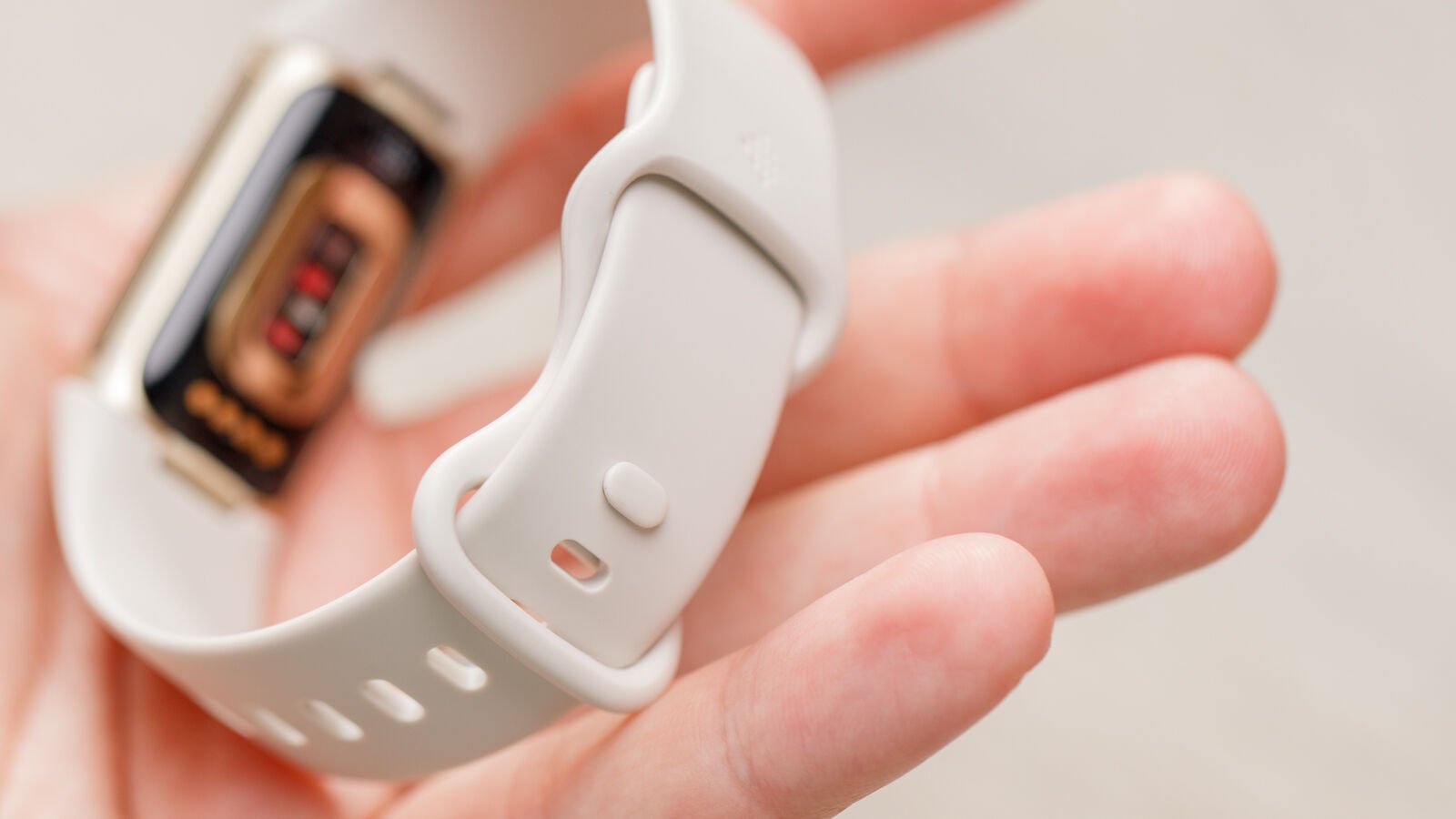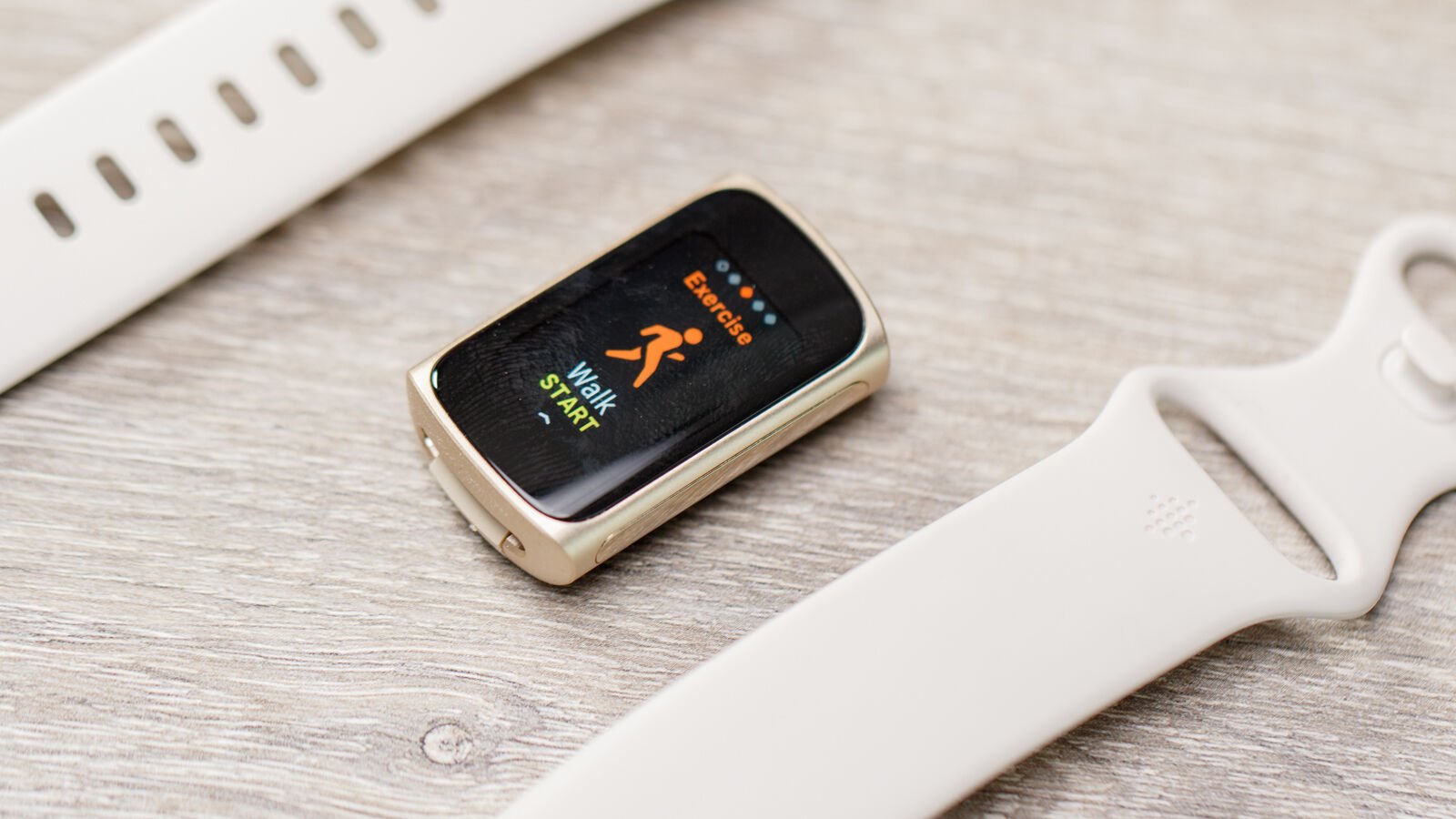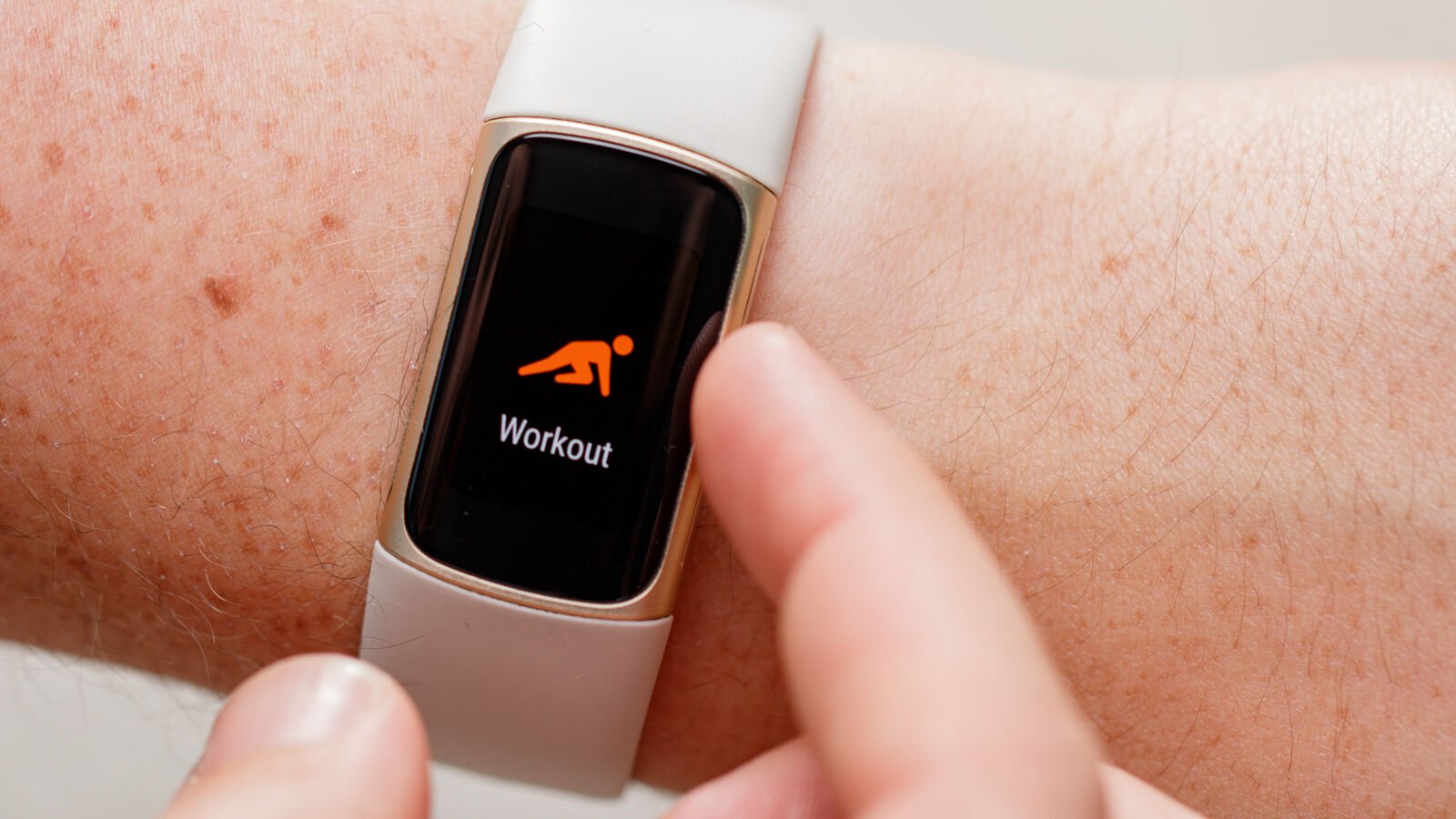Fitbit’s popular Charge series is one of the most established names and longest-running lines of fitness trackers in the business; on the market (and people’s wrists) long before many of its rivals even existed.
Seven years on from the original entry’s debut, the new Charge 5 arrives as the brand’s most advanced tracker yet; marrying the compact form factor of its predecessors with some of the more premium features and fitness smarts found on the company’s smartwatch entries.
Paired with Fitbit Premium, the Charge 5 also introduces a new metric called Daily Readiness, which uses your health data to create a ‘readiness score’; giving you an indication of whether you’re body is best suited to working out or recovering on a given day.
Design and display
- New, more organic design language
- Supports a selection of proprietary straps
- Comfortable and lightweight
- First full-colour screen on a Charge
The new Charge 5 sports a decidedly different aesthetic to its predecessors, dressed in what Fitbit calls its “Biologic Industrial Design Language.”
It’s the same styling that the company already applied to its other recent trackers and smartwatches (like the Sense, Inspire 2, Versa 3 and Luxe), and the Charge 5 wears it well; moving away from its predecessor’s slab-sided housing to a form with softer, more organic geometry and a fully-buttonless layout, whilst maintaining water resistance (for swim tracking).
The 5 also benefits from more premium materials than its predecessor, with a contrasting metal frame, – instead of the Charge 4’s plastic exterior – sporting polished contacts running down either side of its housing (for the tracker’s forthcoming electrocardiogram [ECG] and electrodermal activity [EDA] functionality), set against an otherwise sandblasted finish.
The Lunar White/Gold model (pictured) is easily the most jewellery-like of the Charge 5’s launch colourways but there are also Steel Blue/Platinum and Black/Graphite options if you prefer something a little more understated.

Regardless of colour, the Charge 5 comes fitted with a silicon Infinity Band out of the box but, as ever, there are also an assortment of other proprietary straps (at varying price points) to choose from, with 12 options available at launch. There are three colours of Infinity Band, five Sport Bands – featuring a perforated design, two Hook & Loop Bands that sport a fabric finish and two Horween Leather Bands if you’re after something a little more premium.
Changing bands is easy enough, with a simple latch system that doesn’t instil the greatest confidence when popping straps in and out but proves reliable in actual wear. The included Infinity Band proved comfortable across weeks of constant day and night wear (taking it off for 30 minutes or so here and there), without any signs of skin irritation; something other trackers have caused in the past.
Display
Beyond its eye-catching new design, the elephant in the room is, of course, the Charge 5’s sizeable (for a Fitbit tracker, at least) new screen.
The original Charge’s sliver of a display wasn’t equipped to show much more than the time, but the 1.04in AMOLED panel on the Charge 5 beats out the monochrome offerings of its predecessors by being able to convey more information at a glance through its use of colour (as well as size).

The Luxe may getting this functionality too, but the Charge 5’s screen supports always-on functionality out-the-box, which is handy, considering tilt-to-wake and tap-to-wake responsiveness proved hit-and-miss in practice, more often than I’d have liked.
You have control over when always-on mode kicks in (so it doesn’t stay on at night, for example), as well as a ‘Sleep Mode’, which disables tilt-to-wake temporarily too (although, for some reason, this can’t be scheduled). The trade-off is that you only really get to check the time in always-on mode and it’s so much dimmer than the display’s standard brightness that outdoor viewing becomes very difficult.
There are also over 20 watch faces to choose from, designed to show various metrics and sporting a host of different styles, however, few are what I’d consider tasteful or elegant, or even really complement the Charge 5’s hardware design. As such, the default ‘Continuum’ face remained the go-to choice during review.
The inability to change watch faces on-wrist (having to do so from the app, instead) is frustrating too, particularly as the Charge 5 takes steps to be more like a smartwatch in other areas.
Features and performance
- Easy-to-navigate UI
- Some features are Android-only
- Select Charge 4 apps absent on the Charge 5
- Occasionally laggy interaction
A new display means a new look and feel for the user experience running on the Charge 5.
While you’ll find familiar apps available on other current wearables from the company, icons take up the whole screen here; with a series of five panels available when swiping left or right of the main watch face (settings can be found by swiping down, while fitness and wellbeing stats are located underneath your watch face, by swiping up).
Coming from a Charge 4, you might notice some odd omissions from the software on Fitbit’s latest tracker, though; with the Agenda, Weather and Spotify apps of its predecessor seemingly unavailable to the Charge 5 (at launch, at least – Fitbit hasn’t stated whether the functionality will come later).
While calendar updates from your phone can still technically make their way to your wrist – as the Charge 5 supports smartphone notifications – the loss of some fundamental experiences already established by the Charge line is odd but sadly not uncharacteristic for the company.
What is present includes Exercise – which can be set to offer quick access to up to six supported activities, Alarms – with Smart Wake functionality for a more gradual wake up, Timers – with both countdown and stopwatch options, and the EDA Scan app – one of the Charge 5’s principal new talents, cribbed from the Fitbit Sense.
Fitbit Pay is also present – as the Charge 5 integrates NFC payment functionality – you’ll just need to make sure it works with a supported bank or transit system in your region; with options proving a little more limited outside of Fitbit’s core market of the US.
As with changing watch faces, most of the personalisation and customisation of the experience your Charge 5 offers up has to be performed on Fitbit’s companion iOS/Android app. Some features – like smartphone notification quick replies – are exclusive to Android users, with Fast Pair making initial setup a breeze by simply holding the Charge 5 near a compatible Android phone to get things started.
As shiny and appealing as that new colour display is, the Charge 5 doesn’t feel as tightly wound as its premium look and feel sometimes suggests; namely when swiping around the user experience, which often seemed to lag, during testing.
The effect is made all the more apparent when swiping down to access the tracker’s settings menu; which for some unknown reason is significantly smoother and more responsive to interact with than the rest of the UI. It’s not a debilitating quirk of the Charge 5’s experience but I was expecting better from a (now Google-owned) Fitbit in 2021, particularly when you consider the price/performance balance some its competitors strike.
Fitness and health
- Decent selection of tracked activities
- Good automated workout and sleep detection
- On-wrist EDA sensor for stress scores is insightful
- Value of Fitbit Premium hinges on the perceived value of the service’s content
This Charge 5’s big focus isn’t just tracking your fitness but helping with your wellbeing too; borrowing some of the Sense’s greatest features so that it can offer up everything from automated workout detection (dubbed ‘SmartTrack’ – which worked impressively well in practice), to advanced heart rate monitoring (with high and low heart rate warnings), blood oxygen saturation (while sleeping), sleep tracking, stress tracking, skin temperature variation and more.
Despite being an evidently feature-packed tracker, that “and more” does include some of the Charge 5’s standout features – such as its ECG with AFib (irregular heart rate) detection – which still aren’t available on the tracker, more than a month on from launch.

There are a total of 20 supported workouts to choose from, including walking, running, weight training, yoga, golf, spinning, swimming and martial arts. It’s perhaps not as extensive a list as rival trackers from the likes of Xiaomi and Honor but it covers a great enough breadth that there should be something suitable for almost every type of user (with the exception of any specific tracking modes for wheelchair users or those with other physical differences, as you’d find on the likes of the Apple Watch).
While the Charge 5 can track steps, pool lengths, pace and even your route (thanks to reliable integrated GPS), Active Zone Minutes (introduced alongside the Charge 4) are Fitbit’s primary fitness metric and make keeping tabs on meaningful daily activity both easy and glanceable (they’re also the default metric represented on supported watch faces, like ‘Continuum’).
Heart rate tracking also proved consistent and accurate with itself across similar types and lengths of workout, although more intensive athletes will likely be better served by dedicated sport watches (like Polar’s Vantage M2) or chest-worn monitors.
The EDA Scan app requires you to gently press a finger and thumb against the contacts on either side of the Charge 5’s body and remain still while it gets a read, which it sometimes struggled to initially notice. In isolation, the default three-minute read time seems long but considering the feature is meant to gauge your stress levels and can be paired with mindfulness sessions – available on Fitbit Premium (which are no shorter than three minutes) – it’s actually a good way to practice mindfulness on a regular basis and keep stress in check.
In practice, however, results did seem a little incongruous to my own perception of my stress levels; with Stress Management Scores higher than anticipated (high numbers suggest less stress) on days that felt particularly trying (as well as the opposite also being true).
Similar to Stress Scores, the Charge 5’s sleep tracking data gets converted into a sleep score, with sleep-stage breakdowns and trend recognition being a particularly powerful aspect of the feature; serving up recommended actions to help improve the quality of your sleeping habits.
Fitbit Premium
The Charge 5’s price tag includes six months access to the company’s Fitbit Premium service, which offers up greater insight on the metrics the tracker logs, as well as access to an ever-expanding catalogue of challenges, guided workouts, mindfulness sessions and even healthy meal ideas.
While some trackers have fully embraced a subscription model (like the Whoop Band), Fitbit (and competitors like Apple) gives users a choice that means their tracking hardware and app experience still feels decently well-rounded, even if you don’t commit to the subscription plan beyond any free trial (I tested the Charge 5 for two weeks before activating the Premium trial, to see the difference in experience).
Additional metrics included in Premium – like Responsiveness, Exertion Balance and Sleep Patterns – are welcome extras for those curious to dive into just what their chosen Fitbit is able to glean – based on their fitness and lifestyle habits – but it’s the exclusive guided content that really makes or breaks whether Premium will feel worth paying for. The company is clearly working hard to make Premium more appealing, with celebrity coaches like Deepak Chopra and, most recently, Will Smith joining the roster.
The additional data stuck behind the Premium subscription does feel a little arbitrary and one of the Charge 5’s standout new metrics – Daily Readiness – is yet another tentpole feature that still hasn’t actually been made available to Charge 5 owners; undermining the supposed value of Premium from the outset.
Battery life
- Promise of seven-day battery life
- Real-world longevity better than expected
- Two hours to fully charge but can fast charge part way
- Proprietary USB-A charger
Despite that colour display, Fitbit promises up to seven days of use from the Charge 5 – the same as the Charge 4. However, in practice, using the out-of-box settings it frequently exceeded this promise by a day or so.
Mileage will vary greatly depending on how you have your Charge 5 configured (with features like always-on display) and how often your workout, use the EDA Scan app or use the tracker’s integrated GPS, when tracking…
